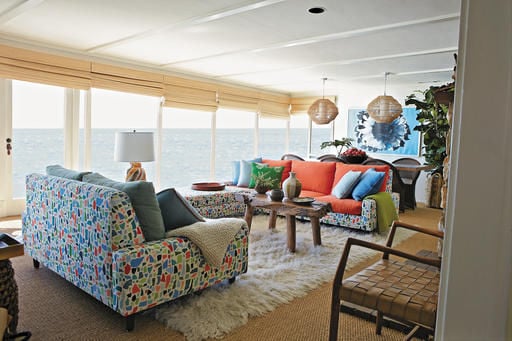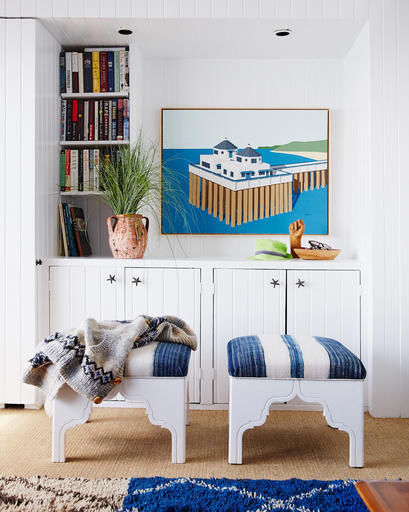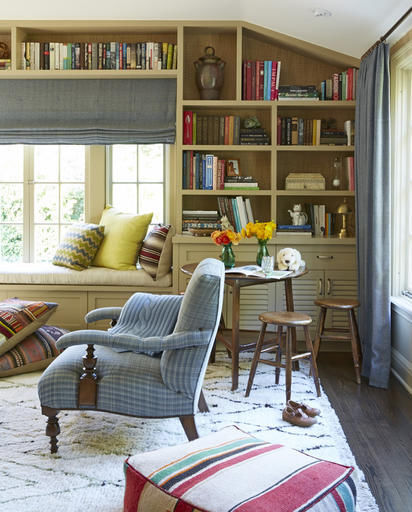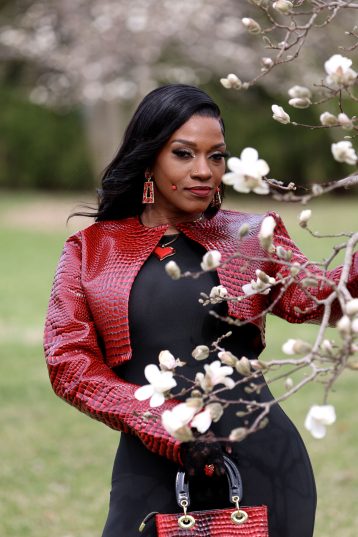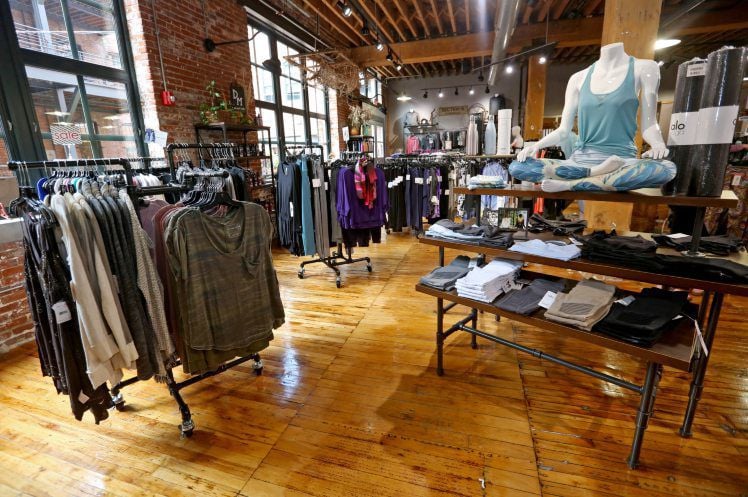For new parents, the urge to keep little ones entertained and enriched can often lead to a home so full of baby gear and toys that grown-up style all but disappears.
It doesn’t have to be like that.
Designer Theodore Leaf says he works with many clients trying to keep their whole home from becoming a playroom.
“All my coolest friends have kids now. And, there’s just nobody giving up their cool card,” says Leaf, host of “Living Big Under 1,000 Sq. Ft.” on Apple TV’s new channel The Design Network.
For one thing, he says, “people are having kids older, so they have better stuff. The whole ‘Oh, this sofa is a jungle gym now’ thing has changed, because it’s an $8,000 sofa that they love.”
How do you make a home both kid- and grownup-friendly? Leaf and two other interior designers — Mike Welch and Nathan Turner — offer some ideas:
Hidden storage
All three designers recommend built-in shelving with closed cabinets at floor-level. Leaf suggests adding drawer pulls that are easy for little hands to grab, like a long bar that runs the length of the drawer.
“Kids open it, and know, ‘It’s for me,’” he says. And, they learn that “that top shelf, with the cable box or whatever, ‘That’s not for me.’”
Instead of a traditional coffee table, consider an upholstered ottoman with space inside. The ottoman provides both storage and a soft surface for toddlers who are learning to walk. And, it doesn’t have to be boring; there are a variety of ottomans for sale, or you can buy one that’s the right size and have it reupholstered.
Or, Leaf suggests, try using a vintage trunk as a coffee table. If you find one at a flea market but can’t get the inside clean enough, just place a big plastic bin inside and store toys there. If you want to keep decorative items on top, situate them on a tray with handles so you lift it on and off easily.
One more hidden storage idea: Bench seating with space inside.
“I live in 800-square-feet, so even hiding paper towels is an issue for me,” Leaf says. He’s added banquette seating that flips up to reveal empty space.
“I could put a whole jungle gym in there,” he says.
Grown-up items
If you’re setting up a seating area for children to draw or do craft projects, resist the urge to buy a table and chairs designed for a child. You can find smaller-scale furniture that suits your style, says Turner, host of the food and home design series “Snack Chat” on The Design Network.
Choose fabrics that are durable and forgiving with spills, he says. Many companies now make outdoor fabrics that are soft to touch and perfect for indoors, too.
Lighter colors — perhaps even white — can work if it’s the right fabric, says the Chicago-based Welch, a former “HGTV Design Stars” competitor.
Along with more grown-up furniture, you also can add stylish toys. Leaf suggests searching flea markets or the web for antiques. One client of his found a chic, midcentury-style dollhouse that’s become a focal point of their living room.
Cool kids’ rooms
Welch recently designed a nursery that had chic, black-and-white stripes on the walls instead of baby pastels.
“I didn’t feel like the room needed to be really juvenile,” he says.
“A lot of times people feel boxed in,” he adds, but “you don’t need basketballs on the walls” for boys or princesses for girls.
Turner agrees, and adds that babyish decor can be impractical.
“Children grow so quickly and their tastes change and they start wanting to have their own environment,” he says. If you choose “very juvenile things you’re going to have to do it all over again.”
So, instead of the bed shaped like a race car, choose a simple, classic bed that a school-age kid won’t think is immature. And, make sure it offers storage space underneath. “Not only is it a neat way to store items, but it’s also low enough for little hands to help pick up after themselves,” Welch says.
Teaching kids to help clean up is a great way to keep the chaos at bay throughout your home, the designers say. Leaf recalls that when he was growing up, “our house was a disaster all the time,” but his cousins’ house seemed perfect, thanks to a label-maker.
“Those kids knew were everything belonged,” he says, “and they were trained from birth to put things away.”
Melissa Rayworth writes for The Associated Press.

